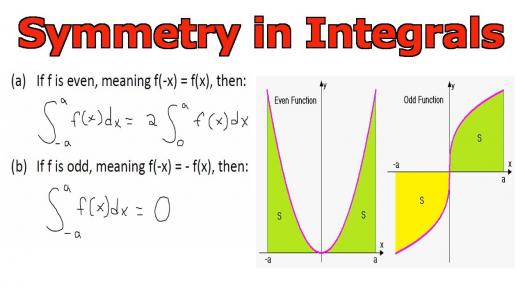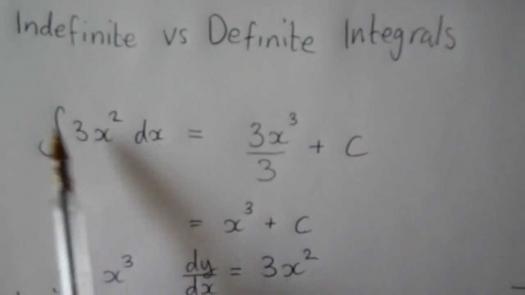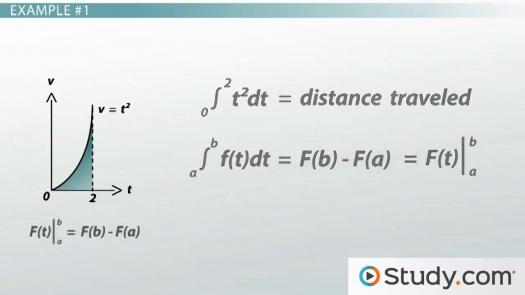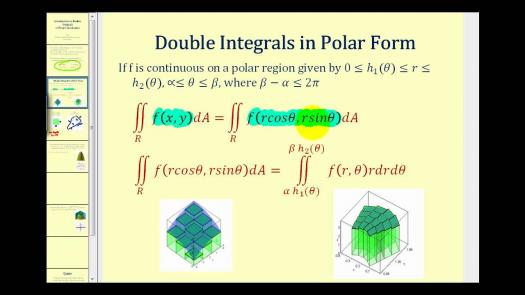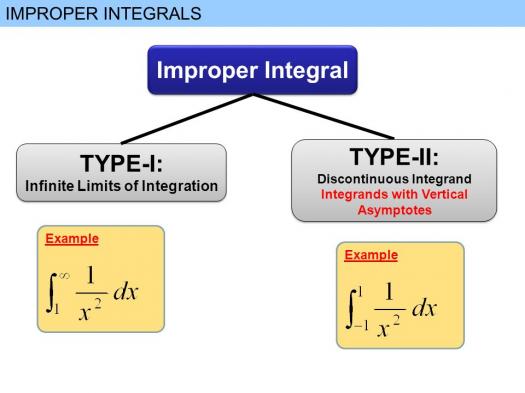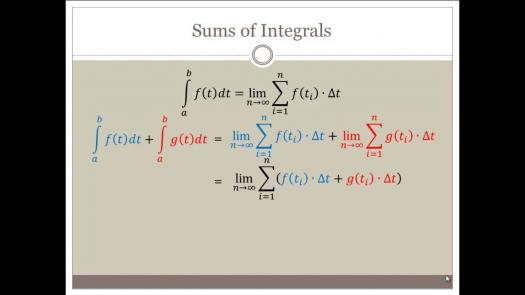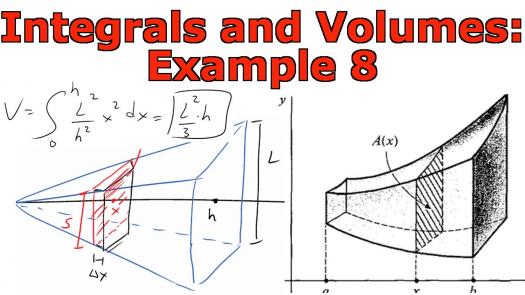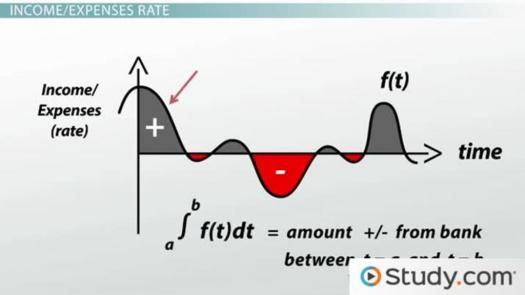Applications Of Definite Integrals Series
(161).jpg)
Integrals can be used to measure a lot of phenomena that affect us in our everyday life. We've set up a series of exercise to help you conceptualize and practice this section of mathematics. Complete this quiz and see if you understand all the principles behind them.
- 1.
By approximately how many micromoles does the plasma concentration increase between x=x=1100x, equals, 100 and x=200x, equals, 200?
- A.
0.067
- B.
0.15
- C.
7.42
- D.
33.5
Correct Answer
C. 7.42Explanation
The plasma concentration increases by approximately 7.42 micromoles between x=100 and x=200.Rate this question:
-
- 2.
The depth of the water in Harsha's bird bath is changing at a rate of r(t)=0.25t-0.1r(t)=0.25t−0.1r, left parenthesis, t, right parenthesis, equals, 0, point, 25, t, minus, 0, poin millimeters per hour (where tt is the time in hours). At time t=t=0t, equals, 0, the depth of the water is 353535 millimeters. What is the depth of the water at t=t3t, equals, hours?
- A.
35+∫33r(t)dt
- B.
35+∫34r(t)dt
- C.
35+∫23r(t)dt
- D.
35+∫03r(t)dt
Correct Answer
D. 35+∫03r(t)dtExplanation
The given question asks for the depth of the water at time t=3 hours. To find this, we need to calculate the integral of r(t) from t=0 to t=3 and add it to 35. The correct answer is 35+∫03r(t)dt.Rate this question:
-
- 3.
The velocity of a particle moving along the xxx-axis is v(t)=3v(t)=3t+2v, left parenthesis, t, right parenthesis, equals, 3, t, plus, 2. At t=0t=0t, equals, 0, its position is 33. What is the position of the particle, ss(t)s, left parenthesis, t, right parenthesis, at any time ttt?
- A.
S(t)=3
- B.
S(t)=3t2+2t+3
- C.
S(t)=2/3t2+2t
- D.
S(t)=2/3t2+2t+3
Correct Answer
D. S(t)=2/3t2+2t+3Explanation
The position of the particle at any time t is given by the equation s(t)=2/3t^2+2t+3. This equation is obtained by integrating the velocity function v(t)=3t+2 with respect to time. The constant term 3 in the position equation represents the initial position of the particle at t=0, which is given as 3 in the question.Rate this question:
-
- 4.
It takes 505050 minutes for Joe to notice that his cola bottling machine has sprung a leak. Joe is able to stop the leak in 1010 minutes. The graph below shows the rate at which cola leaks from the machine as a function of time. How much cola does Joe lose in this bottling disaster?
- A.
300
- B.
200
- C.
490
- D.
100
Correct Answer
C. 490Explanation
The graph shows that the rate of cola leakage is constant at 50 units per minute for the first 1000 minutes, and then it suddenly increases to 100 units per minute for the next 10 minutes until Joe stops the leak. To find out how much cola Joe loses, we need to calculate the total amount of cola leaked during these 1010 minutes. For the first 1000 minutes, Joe loses 50 units per minute, which totals to 50 * 1000 = 50000 units. For the next 10 minutes, the rate is 100 units per minute, resulting in a loss of 100 * 10 = 1000 units. Therefore, Joe loses a total of 50000 + 1000 = 51000 units of cola. However, the question asks for the amount of cola lost, so the correct answer is 490 units, which is the difference between the initial amount of cola and the amount that Joe was able to save.Rate this question:
-
- 5.
The cumulative profit a business has earned is changing at a rate of r(t)r(t)r, left parenthesis, t, right parenthesis dollars per day (where ttt is the time in days). In the first 3030 days, the business earned a cumulative profit of $1700dollar sign, 1700. What does 1700+∫3090r(t)dt1700+\displaystyle\int_{30}^{90}r(t)\,dt1700+∫3090r(t)dt1700, plus, integral, start subscript, 30, end subscript, start superscript, 90, end superscript, r, left parenthesis, t, right parenthesis, space, d, t represent?
- A.
The rate at which the cumulative profit was increasing when t=90.
- B.
The change in the cumulative profit between days 30 and 90
- C.
The cumulative profit the business has earned as of day is 90
- D.
The time it takes for the cumulative profit to increase another 1700 after the first 30 days
Correct Answer
C. The cumulative profit the business has earned as of day is 90Explanation
The expression 1700+∫3090r(t)dt represents the cumulative profit the business has earned as of day 90. The integral represents the change in profit over time, and by adding it to the initial profit of 1700, we get the total cumulative profit up to day 90. Therefore, the correct answer is the cumulative profit the business has earned as of day 90.Rate this question:
-
- 6.
Jackson received the following problem: A particle moves in a straight line with velocity v(t)=6t−20v(t)=6t-20v, left parenthesis, t, right parenthesis, equals, 6, t, minus, 2 meters per second, where tttt is time in seconds. At t=1t, equals, 1, the particle's distance from the starting point was 99 meters in the positive direction. What is the particle's position at t=4t=4t, equals, 4 seconds? Which expression should Jackson use to solve the problem?
- A.
9+∫1 4v′(t)dt
- B.
∫14v′(t)dt
- C.
9+∫14v(t)dt
- D.
∫14v(t)dt
Correct Answer
C. 9+∫14v(t)dtExplanation
The correct answer is 9+∫14v(t)dt. This expression represents the definite integral of the velocity function v(t) from t=1 to t=4, which gives the displacement of the particle during that time interval. Adding 9 to the integral accounts for the initial distance of 99 meters in the positive direction at t=1. Therefore, this expression will give the particle's position at t=4.Rate this question:
-
- 7.
What is the area of the region enclosed by the graphs of f(x)=x2+2x+11f(x)=x^2+2x+11f, left parenthesis, x, right parenthesis, equals, x, start superscript, 2, end superscript, plus, 2, x, plus, 11 , g(x)=−4x+2g, left parenthesis, x, right parenthesis, equals, minus, 4, x, , and x=x=0x, equals, 0?
- A.
21
- B.
6
- C.
9
- D.
63
Correct Answer
C. 9Explanation
The area of the region enclosed by the graphs of f(x) and g(x) can be found by calculating the definite integral of the absolute difference between the two functions over the interval where they intersect. In this case, the two functions intersect at x=0. By evaluating the integral of |f(x)-g(x)| from -∞ to 0, we find that the area enclosed by the graphs is equal to 9.Rate this question:
-
- 8.
What is the area of the region between the graphs of f(x)=8x+6f(x)=8x+6f, left parenthesis, x, right parenthesis, equals, 8, x, plus, 6 and g(x)=x−x2g(x)=x-x^2, g, left parenthesis, x, right parenthesis, equals, x, minus, x, start superscript, 2, end sup, from x=−6x, equals, minus to x=−1x=-1x, equals, minus, 1 ?
- A.
485/6
- B.
643/6
- C.
1195/6
- D.
125/6
Correct Answer
D. 125/6Explanation
The area of the region between the graphs of f(x)=8x+6 and g(x)=x-x^2 from x=-6 to x=-1 can be found by taking the definite integral of the difference between the two functions over the given interval. The integral of f(x)-g(x) from x=-6 to x=-1 is equal to the area of the region between the graphs. Evaluating this integral gives the answer of 125/6.Rate this question:
-
- 9.
A region is enclosed by the yyy-axis, the line y=1yy, equals, 1, and the curve y=x3y=x^3y, equals, x, start superscript, 3, end superscri. What is the volume of the solid generated when this region is rotated around the xx-axis?
- A.
6.33
- B.
5
- C.
0.67
- D.
6π/7
Correct Answer
D. 6π/7Explanation
The volume of the solid generated when the region is rotated around the x-axis can be found using the method of cylindrical shells. Since the region is bounded by the y-axis, the line y=1, and the curve y=x^3, the limits of integration for the volume formula will be from x=0 to x=1. The radius of each cylindrical shell will be x, and the height of each shell will be 1 - x^3. Integrating the formula for the volume of a cylindrical shell over the given limits will result in the answer of 6π/7.Rate this question:
-
- 10.
The base of a solid SS is the region bounded by the circle x2+y2=16x^2+y^2=16x, start superscript, 2, end superscript, plus, y, start superscript, 2, end superscript, equals, 16. Cross-sections perpendicular to the xx-axis are rectangles with heights twice as large as their bases. Determine the exact volume of solid SSS.
- A.
2048/3
- B.
2048/4
- C.
148/3
- D.
148/4
Correct Answer
A. 2048/3Explanation
The solid SS is a circular region with radius 4, centered at (4,0). The cross-sections perpendicular to the x-axis are rectangles with bases parallel to the x-axis. Since the heights of the rectangles are twice the length of their bases, the height of each rectangle is 2 times the distance from the x-axis to the circle. This distance can be found by solving the equation x^2 + y^2 = 16 for y when x = 0. Using the equation of the circle, we get y = √(16 - x^2), so the height of each rectangle is 2√(16 - x^2). The volume of each rectangle is the base (which is the length of the rectangle, given by 2x) multiplied by the height (2√(16 - x^2)). Integrating this expression from x = -4 to x = 4 will give us the volume of the solid. Evaluating the integral will result in the answer 2048/3.Rate this question:
-
Quiz Review Timeline +
Our quizzes are rigorously reviewed, monitored and continuously updated by our expert board to maintain accuracy, relevance, and timeliness.
-
Current Version
-
Mar 22, 2023Quiz Edited by
ProProfs Editorial Team -
Jan 15, 2018Quiz Created by
Anouchka
- Binary Code Quizzes
- Computer Concept Quizzes
- Computer Essential Quizzes
- Computer Forensics Quizzes
- Computer Hardware Quizzes
- Computer Networking Quizzes
- Computer Parts Quizzes
- Computer Programming Quizzes
- Computer Science Quizzes
- Computer Security Quizzes
- Computer Shortcut Key Quizzes
- Computer Skills Quizzes
- Computer Virus Quizzes
- Cyber Security Quizzes
- Data Quizzes
- Data Security Quizzes
- Hacking Quizzes
- HCI Quizzes
- Internet Quizzes
- IT SecurITy Quizzes
- Malware Quizzes
- Microprocessor Quizzes
- Network Quizzes
- Operating System Quizzes
- Phishing Quizzes
- Programming Language Quizzes
- Server Quizzes



